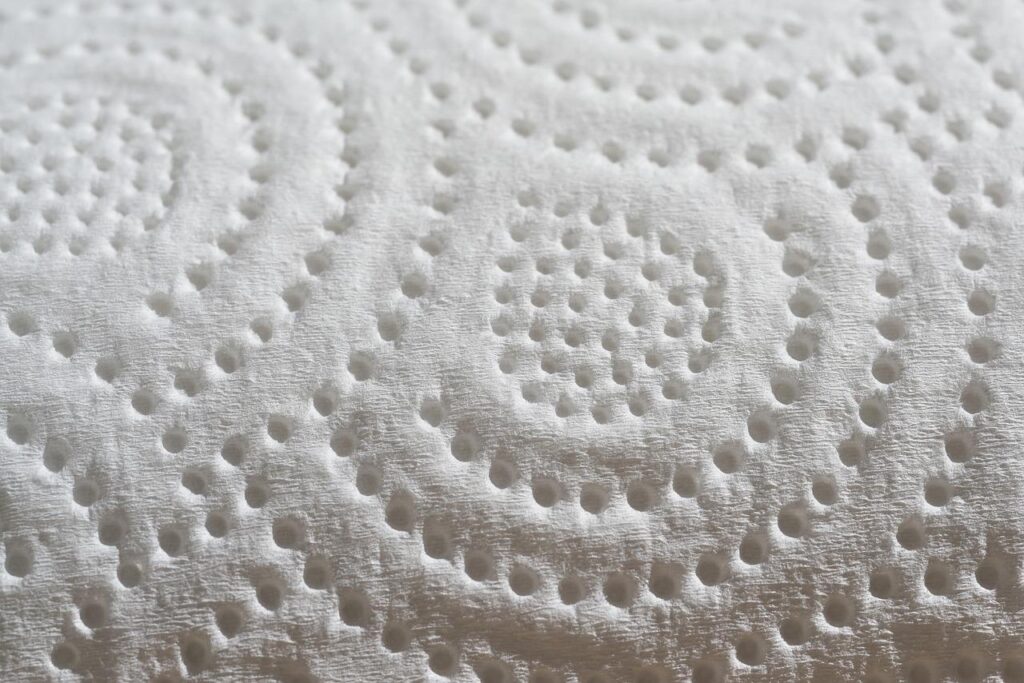What is Vinyl Made Of?

Vinyl is a popular, affordable, and versatile material that’s used in everything from stickers to floor panels. Although vinyl’s most important contribution to our world is, unquestionably, music records and their exquisite aesthetic, that’s far from the only thing it’s good for.
You’re probably surrounded by vinyl materials no matter where you’re sitting—home, office, or car. In this article, we’ll take a deeper look at how vinyl is made and its impact on the environment.
What is Vinyl Made Of?
Before diving into the chemical makeup of this material, we need to set something straight. You might see some sources equate vinyl with PVC (polyvinyl chloride). Using those two terms interchangeably might not get you into trouble aside from a chemistry exam, but they are different.
PVC is one of the most common polymers of vinyl. In other words, PVC is a type of vinyl, which is itself an ethylene-based compound derived from raw materials like coal, petroleum, or natural gas. Manufacturers combine ethylene with chlorine in the first step of PVC production.
Is vinyl a plastic?
PVC is a polymer (type) of vinyl, which is a type of plastic. Plastic describes countless materials that almost everyone regularly uses in some way.
Relative to other plastics, vinyl is notable for being weather-resistant as well as lightweight. It’s also useful as insulation for preventing certain gasses from reaching products, and it has an incredibly high melting point (392 degrees Fahrenheit).
What is Vinyl Used For?
We’ve already covered vinyl’s essential use in LPs, but it has many other notable uses. You might find it in the following products:
- Shower curtains
- Hoses
- Drain pipes
- Raincoats
- Tents
- Flooring
- Ceiling tiles
- Wire and cable insulation
How is Vinyl Manufactured?
Producers need two things to start making PVC: ethylene and chlorine, the latter of which is derived from a salt-and-water solution. Once they have ethylene dichloride, manufacturers turn the material into a type of gas. This gas, which is a monomer, goes through polymerization to become PVC. Monomers are small molecules that combine with other monomers to become polymers.
Environmental Impact of Vinyl
For all its applications, vinyl is not the most eco-friendly material. As a matter of fact, like most other plastics, PVC and other vinyl polymers are not biodegradable. Consequently, this means a small amount of toxic substances can continue to leech off the materials for many, many years.
Additionally, the production of it produces substances that raise the risk of cancers and nervous system disorders after long-term exposure.
Our Take on It — How You Can Use It Responsibly
Because vinyl is one of the world’s most versatile materials, it’s nearly impossible to completely eliminate it from daily usage. A few all-natural substitutions—such as all-natural hardwood floors—are feasible.
Additionally, you might be able to get recycled vinyl for some products. Other materials that have properties similar to it include:
- Natural linoleum
- Stainless steel
- Natural rubber
- Cork
- Bamboo
All in all, being a discerning, responsible consumer is not about being perfect. In other words, making a difference starts with making realistic decisions about the products you use and the organizations you support.


